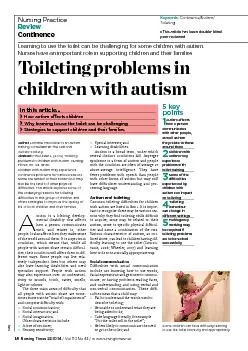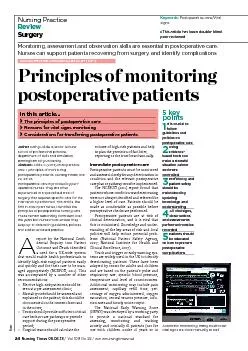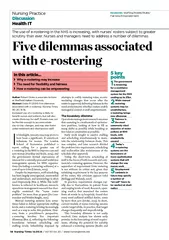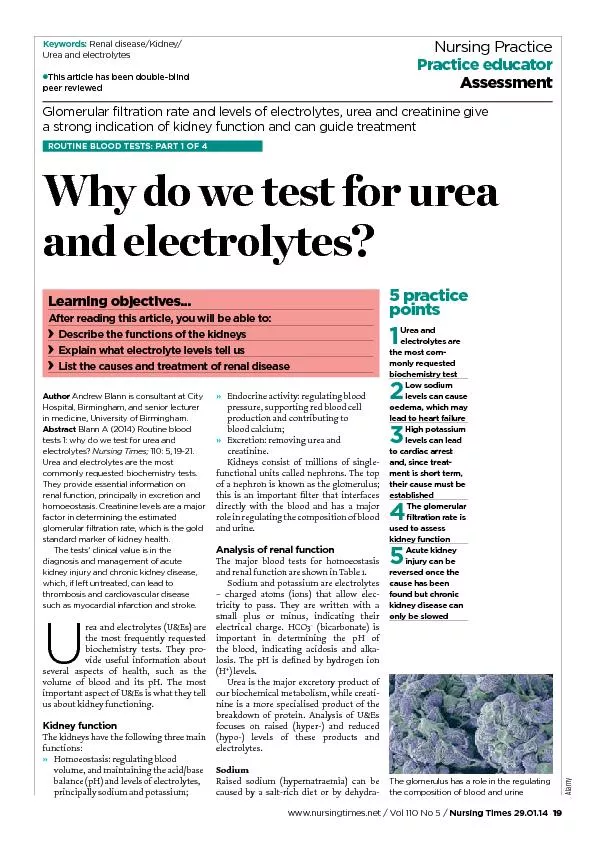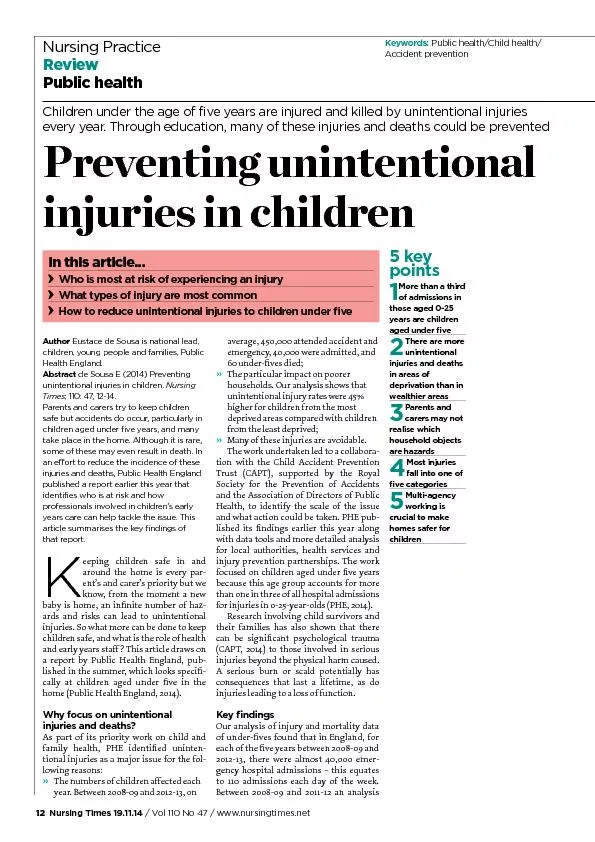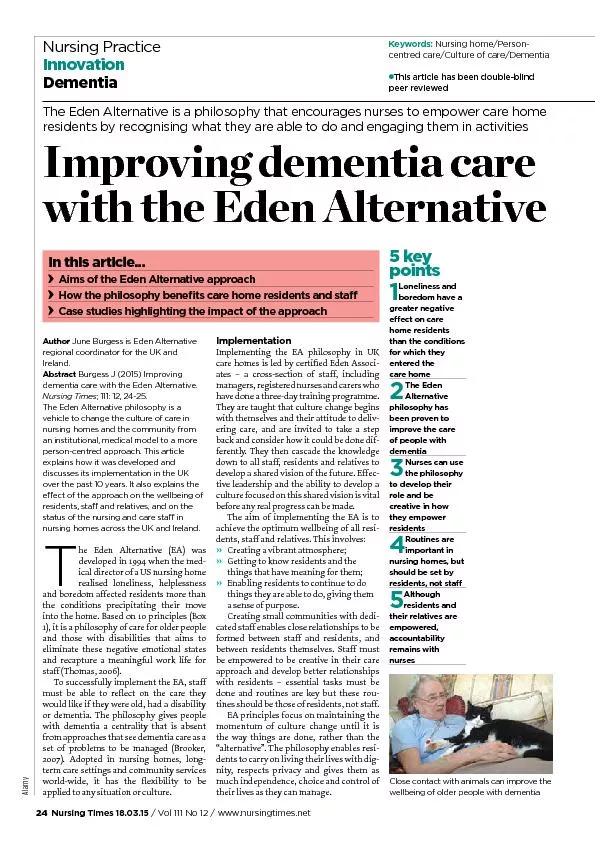PDF-Nursing Times 22.10.14 / Vol 110 No 43 / www.nursingtimes.netNursing P
Author : alida-meadow | Published Date : 2015-11-17
Some children can have diculty learning to use the toilet correctly and appropriatelyAlamy Author 5 key points Autism aects how a person communicates with other
Presentation Embed Code
Download Presentation
Download Presentation The PPT/PDF document "Nursing Times 22.10.14 / Vol 110 No 43 /..." is the property of its rightful owner. Permission is granted to download and print the materials on this website for personal, non-commercial use only, and to display it on your personal computer provided you do not modify the materials and that you retain all copyright notices contained in the materials. By downloading content from our website, you accept the terms of this agreement.
Nursing Times 22.10.14 / Vol 110 No 43 / www.nursingtimes.netNursing P: Transcript
Download Rules Of Document
"Nursing Times 22.10.14 / Vol 110 No 43 / www.nursingtimes.netNursing P"The content belongs to its owner. You may download and print it for personal use, without modification, and keep all copyright notices. By downloading, you agree to these terms.
Related Documents

